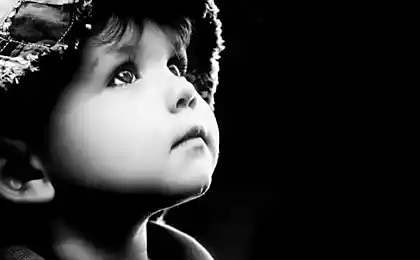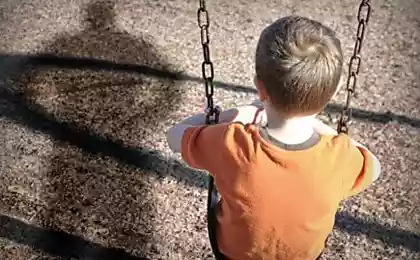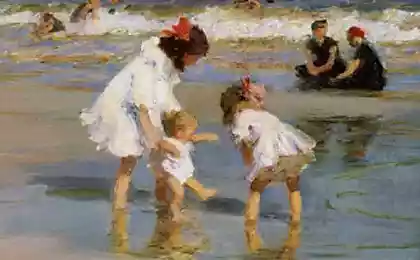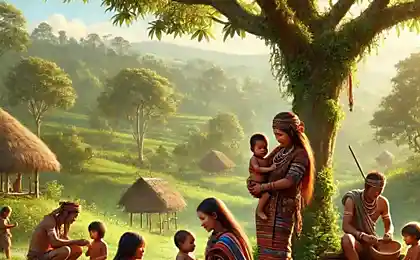750
How to behave with children in the Museum or why not to push
How children should behave in a particular Museum, perhaps the most relevant and controversial topic at the moment. Relevant because there are now a huge number of interactive museums, which is equally interesting for both children and adults. Unfortunately, not always these two groups of people coexist in the same space.
Controversial, because some believe that children, as they say "in Africa children" and they are expensive everywhere, and if you're in the same space baby, you have to suffer for it, as if he can act, he's a child!
Others believe that they also, like the parents of the children paid for the ticket and have the right to enjoy the exhibits without other "irritants" that push you, get in the queue or poke a finger at the screen of the exhibit, thereby disturbing others. Who is right and who is wrong – we will investigate!
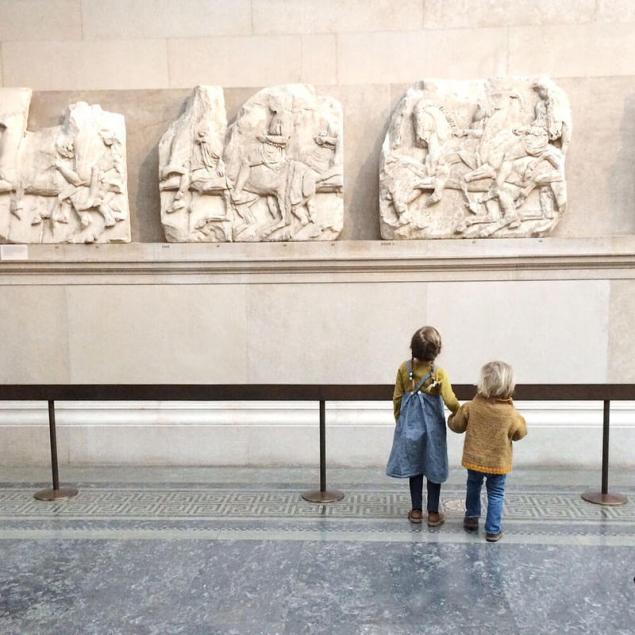
Immediately say, that belong to the second category, although not all of my colleagues – psychologists share this position, I will try to argue.
Many believe that it is okay when children do not notice you and come to any exhibit irrespective of, there are people there or not, considering it his personal property. And here we are talking not only about bad manners! We in early childhood are talking to their children?
— Don't talk to strangers!
We are sure that thus protects your child from possible danger, but that "sees" a child in these words?
– Strangers don't need to talk, whatever happens! That is better than them simply not notice.
It turns out, all strangers to the child — a hindrance, there's only mom and dad, or teacher in a kindergarten. It works exactly because, as you know, the child can not divide all the situations into safe and dangerous and therefore understand your statement as a universal, suitable to all situations.
Demonstrates this hypothesis the following case, which occurred directly to me.
In the newly opened "Moskvarium" in front of the aquarium with seals was pandemonium – everyone wanted to see how they play with a ball or push each other into the water with a conventional Bank. I was standing almost in the forefront, and suddenly my legs began to squeeze the boy about six years old. I was relentless and was a pillar to not like a boy, not a fly flew. But the boy also did not retreat and began to push me. Back hear the cry of the Pope.
— Let the child!
— Let him ask, of course I miss!
Judging by the surprise on his face, dad was not ready to such answer, probably he expected that I slavishly bow down before him, ask for forgiveness and make a "green corridor" that the boy could easily go back and forth.
The child was smarter than the Pope and, on hearing me, said, " may I pass?".
That is, I for some reason ceased to be for a child invisible, and he was able to talk to me.
Of course, many of you may think: "Like, who are you to teach people how to raise children, also a psychologist found".
That's right, I have no right to raise other people's children, at least in the Museum, because I don't work there, and I for one will not pay. But this particular child has violated my personal boundaries, I felt uncomfortable and I did not want to endure it and to keep it to myself. That right, I certainly have!
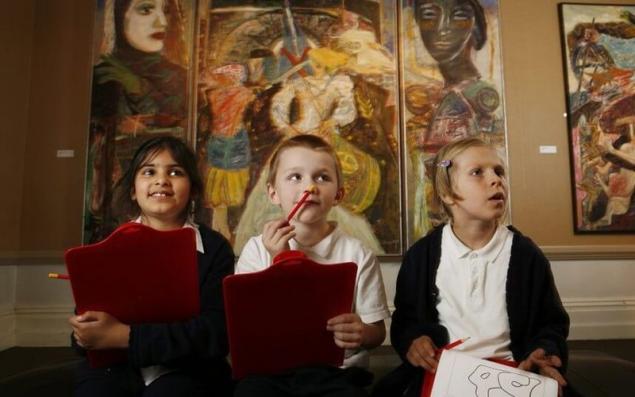
We – Russian people are generally very patient and will endure to the last, even if that's very uncomfortable. For example, if near you in the subway will go bad-smelling man who took the horizontal space for five, you'll wince, close his nose with a handkerchief or maybe even to grumble, but there's no way I press the call button of the driver! And the people next to you will do the same – to exchange glances, to wince in disgust, but nothing to do with it!
This style of behavior a role model to our children behave badly, obscene and you will, no one will touch you! But the man in the subway here, right? "And you suffer yourself to health!".
If, however, you, dear parents, touched by my words and you thought about how your child behaves in public places, I in turn will not leave you at "the broken trough" and will offer a gradual way to make your child behaved and did not disturb others, and together you received benefit and pleasure from cultural holidays.
1)"Adjust" your child.
Very often children do not even know where their parents are, that is where they led, they know the fact. It is fundamentally not true, because the child needs to be set on visiting a particular place, it does not matter whether you are going to visit, for a walk or to a Museum. It happens so that the child is just not emotionally ready for a particular event, and therefore you need to prepare it.
Divide the first stage of the "settings" to multiple sub-categories.
A) Give General information
Before going to the Museum tell your child where you're going and what there going to do. It's best a conversation to start the day before the event. Let the day not be the best idea! Even an adult may not always be able to switch quickly to gather and then the whole evening to enjoy what he saw, even though it is a hike to the Bolshoi theater for the ballet, which you dreamed all his life to see. Try as much detail as possible to describe what you will do. For example, if you go to the zoo, tell me, what animals to be seen.
B) Set a time frame
Encourage your child to plan. It should, of course, not only to ensure that he didn't cry, and every five minutes asked, "are We there yet?", "When are we going home?" but for a child to clearly understand the specified limits, and if I agreed to this adventure, I knew that he have to stay maybe not in the most comfortable conditions for some time. But at the same time he will represent when it's all over and it will calm him down.
Tell us what you all will be in so-and-so, come in for example one hour, and then sit down to eat, then another hour will be at the Museum and then go home. The child should know when he gets back home! Repeat this information several times. The child on the hand needs to be a watch that he could control time. For example, he again asks you, "How long?" You just repeat the time that you have previously identified, and ask the child to look at clocks and to calculate.
Q) Explain the rules of conduct
Clearly explain to your child the rules of conduct in the Museum. When this is not enough to just say "don't go", "slow down", explain that there are other people who your child would interfere. Though this does not mean that your child now will turn into the most intelligent gentleman or lady on the exhibition, but you will put the tracker allows during a visit to the Museum to speak, not "Quiet" or "Calm," and for example "People". What is the difference between the first two messages from the last?
In the first case, the child does not understand why to be quiet or calm, because a number of "ghosts". Why else would behave so strange and uncomfortable? When you say "People", you in one word to fit the message that the child decodes as "I their behavior disturb others," and he gradually begins to understand, and why you need to keep yourself within certain limits.
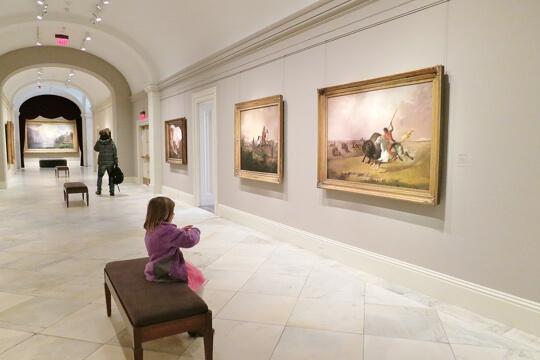
Even more effective would be if the explanation of the rules you will be removed words with the particle "not". For example, instead of "don't run" — "Walk quietly" instead of "don't go" — "Speak low". This is important because when the child say words with the particle "not", he takes it as though its limit – that is, for some not clear for him why take away a sacred right to behave as he wants, while not giving anything in return. Limitations in behavior without the particle "not", on the contrary, extend its capabilities, that is, the child understands that it is necessary not just for something to do, and to do something new. Perhaps even the child will be interesting to cope with this new challenge. Of course, it does not always work, but even if you use rules with the particle "not", it just needs to be rules and without it.
However, besides the obvious rules of conduct necessary to add more rules more suitable for museums with interactive exhibits that children somehow never explained. Note to parents the following rules, which will be useful not only when visiting the Museum:
-If the front of the exhibit to which you want to approach someone is, then take place;
If people are interested in before you exhibit too much, or you don't seen to come while to another exhibit, where people are less or turn to the person asking if you can pass;
-If you really want something to play, and there is a man, go and ask him if you can go along with it! Most likely, you will be allowed, if not, go to another exhibit;
-When to exhibit that you've played, approached other people, give it to them.
These rules are very simple, and believe me, they can observe not only an adult, but almost any child the age of five.
After all the rules are announced, ask what the child has learned. It is very important to understand what he memorized and what is not.
2) Verify that you meet the physiological needs of the child
Under physiological needs are needs for food, water, sleep, and generally in a comfortable physiological state.
Of course, the child must be physiologically satisfied always and not only during a visit to the Museum, but however, if your child has to pee, then your job is to make sure that he immediately went there. You should always be with a bottle of water and a light snack. The fact is that if the child does not eat does not drink or go to the toilet, something about viewing an exhibition or Museum is already out of the question, he just about anything else will not be able to think.
I often see parents, and for some reason in the zoo, trying to drag her child by the hand and say, "Then get a drink, do not whine! We still have the monkey and giraffe!" The child should not suffer because of your mistakes, he can not tolerate, and, of course, he will not listen to you! So, if your child misbehaves, make sure in the beginning, satisfied his physiological needs.
Imagine that you are sitting in an office behind a computer all day and you have no opportunity to go to the bathroom, drink water or eat for nine hours. In joy you will this work? For a child 5-8 years your nine o'clock is two of them, so not familiar with their physiological needs, just always calm about the fact that the child asked to eat, drink or go to the toilet. Take ten minutes, and your child will give you and others another hour of comfortable pastime.
3) Give the child freedom.
It is very important to understand, dear parents, that came to the Museum with a child, you realize that you yourself pleasure from the process will not get well, or not fully, so I suggest to visit with the child at the Museum, you went alone. But that's just all the others suffer from the fact that you went to the Museum with a child, should not. So once again, not to aggravate the situation and give your child the opportunity to fully enjoy the Museum. And in order to obtain this enjoyment in full measure, if you've followed the first two points, then it can proceed to the third. Give your child freedom. No need to hold his hand and carry with him, choosing for him what you should approach. If the room is closed, feel free to let him go and tail, let him leads you, not you it. This freedom of action will help your child less tired, as it focused only on their desires.
At the same time, to give freedom, not mean, not to control. If the child handles himself, and you act as a friend who with him exploring something new, than the supervisor with a stick, then you do not need a reminder about the rules. But if the child begins to behave disrespectfully towards you or others, remind him what you agreed to, and acting like that is not worth it.
4) After visiting the Museum, ask about the experiences of the child and tell us about your (feedback)
Teach your child to share his experiences – what he liked, what liked. After tell in the same vein about his experience and give him feedback about how he behaved. It should be done, of course, in a calm analytical manner, without emotion, even if the trip was not without adventure.
It is very important back home, to exchange views and experiences, as the child consolidate what he saw, so the impressions of the trip will be no more.
5) do Not drive the child to where he will not be interested.
And it is not only his desire but also with the possibilities. For example, shouldn't take your five year old son or daughter, no matter how well-mannered they may be, to the ballet or adult play. Children need to move, to be involved in the action, they can't just silently miss you, as adults, they will show you their displeasure that they are not interested – and certainly will be right.
First and foremost, ask yourself the question "For whom did you go to this event — for yourself or for a child?". If you chose the first answer, then try for a few hours to leave the baby with someone. I assure you that otherwise, no one of pleasure from watching the play will not work – neither you, nor the child, nor the others.
If you set a goal to educate your child with Tchaikovsky's ballet or the Opera, then I hasten to assure you that your efforts will not be appreciated, moreover, thus, you can long to discourage a child's craving for beauty. After all, for many years, such events can be associated the child with boredom, i.e. lack of interest, but very difficult to do what you're not interested.
The same thing, by the way, and early reading serious works of Russian classics, do not hurry to run ahead of the locomotive of the school curriculum — the child might have something not to understand and he gets bored, and no further return to this will only cause negative emotions. So that all the time!
In talking about the sense of beauty we should also mention the campaign in an art gallery.
There are various exhibitions of children's drawings, and it's a great place to spend time with the child. The fact that the child is familiar with the style in which the pictures drawn and are clear about the subjects, he may with them ponderosity.
Speaking of the galleries of the format of the Hermitage or the Tretyakov gallery, it is my opinion, your child is nothing to do there years to ten or twelve. Now you probably wondered: "What should a child be introduced to the paintings of great artists? He is now twelve years not knowing who Da Vinci, Rodin, Renoir, Serov?".
They definitely need to know there is a huge amount of literature for children with the works of great artists, and you have in store probably have some kind world Atlas of painting. But it is unlikely your child is intrigued by the painting "bathing the red horse", say, "Mom! What bends, what line, what color and linear perspective, I most certainly want to see this masterpiece live!".
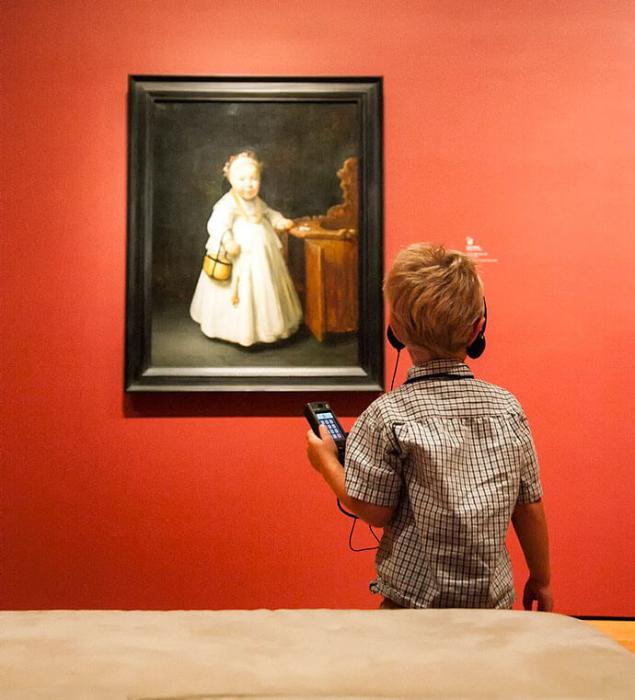
For your child under ten years of age there is no difference to look at the original or a reproduction. Of course, in the Museum he might have something like it, but definitely not all, and he is again bored. Again ask yourself the question – who should be in the gallery, you or your child? And that, to go with five children in the gallery, to forget. It's like a grown man two hours to walk through a huge room and consider colored walls.
Of course, dear parents, if you have decided to adhere to the above instructions, do it primarily for yourself and for your children and not for others! And returning to the original question – is it possible to allow children to behave as they want, then the answer is another question – when children cease to be children?
Is the child who always behaved the way I wanted, not noticing anything or anyone around, suddenly become respectful of other people's emotions and someone else's space to an adult?
Of course not! But no instructions in the world won't help you to educate your child respect other people, until he had no worthy example to follow! So, to paraphrase a military command, "eyes on the parents!". published
I'll see you at the Museum;)
Author: Eugene Lange
P. S. And remember, just changing your mind — together we change the world! ©
Join us in Facebook , Vkontakte, Odnoklassniki
Source: /users/20649
Controversial, because some believe that children, as they say "in Africa children" and they are expensive everywhere, and if you're in the same space baby, you have to suffer for it, as if he can act, he's a child!
Others believe that they also, like the parents of the children paid for the ticket and have the right to enjoy the exhibits without other "irritants" that push you, get in the queue or poke a finger at the screen of the exhibit, thereby disturbing others. Who is right and who is wrong – we will investigate!

Immediately say, that belong to the second category, although not all of my colleagues – psychologists share this position, I will try to argue.
Many believe that it is okay when children do not notice you and come to any exhibit irrespective of, there are people there or not, considering it his personal property. And here we are talking not only about bad manners! We in early childhood are talking to their children?
— Don't talk to strangers!
We are sure that thus protects your child from possible danger, but that "sees" a child in these words?
– Strangers don't need to talk, whatever happens! That is better than them simply not notice.
It turns out, all strangers to the child — a hindrance, there's only mom and dad, or teacher in a kindergarten. It works exactly because, as you know, the child can not divide all the situations into safe and dangerous and therefore understand your statement as a universal, suitable to all situations.
Demonstrates this hypothesis the following case, which occurred directly to me.
In the newly opened "Moskvarium" in front of the aquarium with seals was pandemonium – everyone wanted to see how they play with a ball or push each other into the water with a conventional Bank. I was standing almost in the forefront, and suddenly my legs began to squeeze the boy about six years old. I was relentless and was a pillar to not like a boy, not a fly flew. But the boy also did not retreat and began to push me. Back hear the cry of the Pope.
— Let the child!
— Let him ask, of course I miss!
Judging by the surprise on his face, dad was not ready to such answer, probably he expected that I slavishly bow down before him, ask for forgiveness and make a "green corridor" that the boy could easily go back and forth.
The child was smarter than the Pope and, on hearing me, said, " may I pass?".
That is, I for some reason ceased to be for a child invisible, and he was able to talk to me.
Of course, many of you may think: "Like, who are you to teach people how to raise children, also a psychologist found".
That's right, I have no right to raise other people's children, at least in the Museum, because I don't work there, and I for one will not pay. But this particular child has violated my personal boundaries, I felt uncomfortable and I did not want to endure it and to keep it to myself. That right, I certainly have!

We – Russian people are generally very patient and will endure to the last, even if that's very uncomfortable. For example, if near you in the subway will go bad-smelling man who took the horizontal space for five, you'll wince, close his nose with a handkerchief or maybe even to grumble, but there's no way I press the call button of the driver! And the people next to you will do the same – to exchange glances, to wince in disgust, but nothing to do with it!
This style of behavior a role model to our children behave badly, obscene and you will, no one will touch you! But the man in the subway here, right? "And you suffer yourself to health!".
If, however, you, dear parents, touched by my words and you thought about how your child behaves in public places, I in turn will not leave you at "the broken trough" and will offer a gradual way to make your child behaved and did not disturb others, and together you received benefit and pleasure from cultural holidays.
1)"Adjust" your child.
Very often children do not even know where their parents are, that is where they led, they know the fact. It is fundamentally not true, because the child needs to be set on visiting a particular place, it does not matter whether you are going to visit, for a walk or to a Museum. It happens so that the child is just not emotionally ready for a particular event, and therefore you need to prepare it.
Divide the first stage of the "settings" to multiple sub-categories.
A) Give General information
Before going to the Museum tell your child where you're going and what there going to do. It's best a conversation to start the day before the event. Let the day not be the best idea! Even an adult may not always be able to switch quickly to gather and then the whole evening to enjoy what he saw, even though it is a hike to the Bolshoi theater for the ballet, which you dreamed all his life to see. Try as much detail as possible to describe what you will do. For example, if you go to the zoo, tell me, what animals to be seen.
B) Set a time frame
Encourage your child to plan. It should, of course, not only to ensure that he didn't cry, and every five minutes asked, "are We there yet?", "When are we going home?" but for a child to clearly understand the specified limits, and if I agreed to this adventure, I knew that he have to stay maybe not in the most comfortable conditions for some time. But at the same time he will represent when it's all over and it will calm him down.
Tell us what you all will be in so-and-so, come in for example one hour, and then sit down to eat, then another hour will be at the Museum and then go home. The child should know when he gets back home! Repeat this information several times. The child on the hand needs to be a watch that he could control time. For example, he again asks you, "How long?" You just repeat the time that you have previously identified, and ask the child to look at clocks and to calculate.
Q) Explain the rules of conduct
Clearly explain to your child the rules of conduct in the Museum. When this is not enough to just say "don't go", "slow down", explain that there are other people who your child would interfere. Though this does not mean that your child now will turn into the most intelligent gentleman or lady on the exhibition, but you will put the tracker allows during a visit to the Museum to speak, not "Quiet" or "Calm," and for example "People". What is the difference between the first two messages from the last?
In the first case, the child does not understand why to be quiet or calm, because a number of "ghosts". Why else would behave so strange and uncomfortable? When you say "People", you in one word to fit the message that the child decodes as "I their behavior disturb others," and he gradually begins to understand, and why you need to keep yourself within certain limits.

Even more effective would be if the explanation of the rules you will be removed words with the particle "not". For example, instead of "don't run" — "Walk quietly" instead of "don't go" — "Speak low". This is important because when the child say words with the particle "not", he takes it as though its limit – that is, for some not clear for him why take away a sacred right to behave as he wants, while not giving anything in return. Limitations in behavior without the particle "not", on the contrary, extend its capabilities, that is, the child understands that it is necessary not just for something to do, and to do something new. Perhaps even the child will be interesting to cope with this new challenge. Of course, it does not always work, but even if you use rules with the particle "not", it just needs to be rules and without it.
However, besides the obvious rules of conduct necessary to add more rules more suitable for museums with interactive exhibits that children somehow never explained. Note to parents the following rules, which will be useful not only when visiting the Museum:
-If the front of the exhibit to which you want to approach someone is, then take place;
If people are interested in before you exhibit too much, or you don't seen to come while to another exhibit, where people are less or turn to the person asking if you can pass;
-If you really want something to play, and there is a man, go and ask him if you can go along with it! Most likely, you will be allowed, if not, go to another exhibit;
-When to exhibit that you've played, approached other people, give it to them.
These rules are very simple, and believe me, they can observe not only an adult, but almost any child the age of five.
After all the rules are announced, ask what the child has learned. It is very important to understand what he memorized and what is not.
2) Verify that you meet the physiological needs of the child
Under physiological needs are needs for food, water, sleep, and generally in a comfortable physiological state.
Of course, the child must be physiologically satisfied always and not only during a visit to the Museum, but however, if your child has to pee, then your job is to make sure that he immediately went there. You should always be with a bottle of water and a light snack. The fact is that if the child does not eat does not drink or go to the toilet, something about viewing an exhibition or Museum is already out of the question, he just about anything else will not be able to think.
I often see parents, and for some reason in the zoo, trying to drag her child by the hand and say, "Then get a drink, do not whine! We still have the monkey and giraffe!" The child should not suffer because of your mistakes, he can not tolerate, and, of course, he will not listen to you! So, if your child misbehaves, make sure in the beginning, satisfied his physiological needs.
Imagine that you are sitting in an office behind a computer all day and you have no opportunity to go to the bathroom, drink water or eat for nine hours. In joy you will this work? For a child 5-8 years your nine o'clock is two of them, so not familiar with their physiological needs, just always calm about the fact that the child asked to eat, drink or go to the toilet. Take ten minutes, and your child will give you and others another hour of comfortable pastime.
3) Give the child freedom.
It is very important to understand, dear parents, that came to the Museum with a child, you realize that you yourself pleasure from the process will not get well, or not fully, so I suggest to visit with the child at the Museum, you went alone. But that's just all the others suffer from the fact that you went to the Museum with a child, should not. So once again, not to aggravate the situation and give your child the opportunity to fully enjoy the Museum. And in order to obtain this enjoyment in full measure, if you've followed the first two points, then it can proceed to the third. Give your child freedom. No need to hold his hand and carry with him, choosing for him what you should approach. If the room is closed, feel free to let him go and tail, let him leads you, not you it. This freedom of action will help your child less tired, as it focused only on their desires.
At the same time, to give freedom, not mean, not to control. If the child handles himself, and you act as a friend who with him exploring something new, than the supervisor with a stick, then you do not need a reminder about the rules. But if the child begins to behave disrespectfully towards you or others, remind him what you agreed to, and acting like that is not worth it.
4) After visiting the Museum, ask about the experiences of the child and tell us about your (feedback)
Teach your child to share his experiences – what he liked, what liked. After tell in the same vein about his experience and give him feedback about how he behaved. It should be done, of course, in a calm analytical manner, without emotion, even if the trip was not without adventure.
It is very important back home, to exchange views and experiences, as the child consolidate what he saw, so the impressions of the trip will be no more.
5) do Not drive the child to where he will not be interested.
And it is not only his desire but also with the possibilities. For example, shouldn't take your five year old son or daughter, no matter how well-mannered they may be, to the ballet or adult play. Children need to move, to be involved in the action, they can't just silently miss you, as adults, they will show you their displeasure that they are not interested – and certainly will be right.
First and foremost, ask yourself the question "For whom did you go to this event — for yourself or for a child?". If you chose the first answer, then try for a few hours to leave the baby with someone. I assure you that otherwise, no one of pleasure from watching the play will not work – neither you, nor the child, nor the others.
If you set a goal to educate your child with Tchaikovsky's ballet or the Opera, then I hasten to assure you that your efforts will not be appreciated, moreover, thus, you can long to discourage a child's craving for beauty. After all, for many years, such events can be associated the child with boredom, i.e. lack of interest, but very difficult to do what you're not interested.
The same thing, by the way, and early reading serious works of Russian classics, do not hurry to run ahead of the locomotive of the school curriculum — the child might have something not to understand and he gets bored, and no further return to this will only cause negative emotions. So that all the time!
In talking about the sense of beauty we should also mention the campaign in an art gallery.
There are various exhibitions of children's drawings, and it's a great place to spend time with the child. The fact that the child is familiar with the style in which the pictures drawn and are clear about the subjects, he may with them ponderosity.
Speaking of the galleries of the format of the Hermitage or the Tretyakov gallery, it is my opinion, your child is nothing to do there years to ten or twelve. Now you probably wondered: "What should a child be introduced to the paintings of great artists? He is now twelve years not knowing who Da Vinci, Rodin, Renoir, Serov?".
They definitely need to know there is a huge amount of literature for children with the works of great artists, and you have in store probably have some kind world Atlas of painting. But it is unlikely your child is intrigued by the painting "bathing the red horse", say, "Mom! What bends, what line, what color and linear perspective, I most certainly want to see this masterpiece live!".

For your child under ten years of age there is no difference to look at the original or a reproduction. Of course, in the Museum he might have something like it, but definitely not all, and he is again bored. Again ask yourself the question – who should be in the gallery, you or your child? And that, to go with five children in the gallery, to forget. It's like a grown man two hours to walk through a huge room and consider colored walls.
Of course, dear parents, if you have decided to adhere to the above instructions, do it primarily for yourself and for your children and not for others! And returning to the original question – is it possible to allow children to behave as they want, then the answer is another question – when children cease to be children?
Is the child who always behaved the way I wanted, not noticing anything or anyone around, suddenly become respectful of other people's emotions and someone else's space to an adult?
Of course not! But no instructions in the world won't help you to educate your child respect other people, until he had no worthy example to follow! So, to paraphrase a military command, "eyes on the parents!". published
I'll see you at the Museum;)
Author: Eugene Lange
P. S. And remember, just changing your mind — together we change the world! ©
Join us in Facebook , Vkontakte, Odnoklassniki
Source: /users/20649




